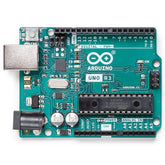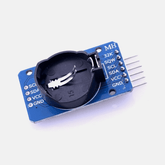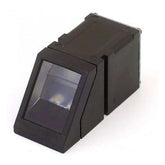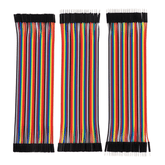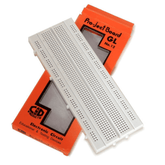Arduino Hacks we bet you did not know!
Summary
Unveil the extraordinary world of Arduino with our captivating blog on "Arduino Hacks: Unveiling the Unseen!" Delve into 10 remarkable hacks that will elevate your Arduino game. From ingenious power optimization and advanced PWM techniques to creative LCD displays and wireless communication mastery, these hacks redefine possibilities. Witness the fusion of sensors for precision, integration of fingerprint sensors, and even sound generation. Embrace real-time clock wizardry, error handling expertise, and the art of pushing Arduino limits. Get ready to revolutionize your projects! Embark on this Arduino journey today and turn your ideas into reality.
Introduction
Do you want to take your skills with digital electronics and coding even further? Arduino hacks offer an exciting way for hobbyists, makers, tinkerers, engineers and tech enthusiasts of all kinds to explore the possibilities that come when they combine their knowledge with microcontroller boards like Arduino. With an array of powerful features including a variety of versatile programming language options (C++ being widely used), access to countless libraries supporting open-source hardware platforms as well as easy integration into other technologies. This provides a unique opportunity to create interactive projects or automation systems at any level from beginner right up through professional use cases.
By learning about Arduino Hacks users have more control over where technology goes and how it is applied - such flexibility allows both practical solutions while also enabling users’ imaginations run wild! To get started no prior experience is needed; getting things set up can be achieved easily by following step-by-step instructions online which will help make setting everything up straightforward so novice hackers can jump straight onto creating innovative devices & programs quickly after basic principles are understood. Anyone interested should definitely consider discovering what's available out there waiting for them!
Hack 1: Optimizing Power Consumption
As technology becomes increasingly sophisticated and integrated into everyday life, energy efficiency is becoming an ever more important consideration for consumers. This rings especially true in the world of Arduino development where users rely on reliable power sources to ensure efficient operation of their designed projects. One powerful tool available to help reduce overall power consumption while still providing all necessary functionality are sleep modes or deepsleeps as they’re often referred to among veteran developers.

Sleep Modes allow one device or component within a larger system – such as an Arduino microcontroller board -to transition from active usage mode (RAM is powered up) into a low-power state when not being used actively by its user(s). This results in greatly reduced current draw, with the specific details depending upon which type of Sleep Mode was implemented e.g., SLEEP_MODE_IDLE vs SLEEP_MODE_PWRDOWN etc… It should however be noted that according to experts at Adafruit Industries total extra savings will depend overwhelmingly on how much code needs actually run before going back again ”into a serious slumber. For example something like a temperature monitor carrying out basic operations periodically might easily see total consumption reductions upwards towards 70%.
Still it must also further understood reducing your devices' battery drain without sacrificing performance requires proper implementation and understanding what each frequency/mode does best.
read more : Interfacing GPS Module with Arduino
Hack 2: Advanced Pulse Width Modulation (PWM)
Arduino PWM is a versatile and powerful tool for controlling electronic devices such as light dimming, motor speed control, sound volume regulation. It provides users with the freedom to expand its applications beyond simple dimming in compelling new ways.
By integrating Arduino PWM into other projects or appliances, you can easily create smart home solutions that turn on/off lights based on predefined schedules; adjust air conditioning temperatures when occupants are away from their homes; deploy automated irrigation systems according to local weather conditions; open/close curtains automatically during peak sunlight hours; even dispense pet food at regular intervals without manual intervention. These features add a wealth of convenience and security while saving energy costs over time!

In industrial settings too PWMs offer numerous possibilities - ranging from automatic flow control valves monitoring chemical processes across factories to complex robotic arms programmed remotely via bluetooth technology connection seamless automation that significantly increases efficiency and productivity goals. Not only does this improved accuracy minimize errors but it also adds resiliency as operations no longer rely solely on human labor alone vulnerable outliers such within crew shifts might experience fatigue leading potential mistakes in production levels.
read more : Top 10 Arduino Projects to Get Started With
Hack 3: Creative LCD Displays
Utilizing LCDs with Arduino is a great choice for professionals seeking to build successful merchandising strategies that feature eye-catching visuals.
LCDs offer high contrast ratios and clear resolutions which make it easy for users to create customized pictures or presentations easily in accordance with their project needs - from 2D images designed by motion sensor cameras to 3D graphs integrated into auto navigation systems – all using minimal power consumption due its LED backlighting technology. Even better yet, these hardware components are inherently cost effective because they require simple assembly without extensive wiring setup allowing businesses access lower production costs if needed.
In addition, through Arduino control functionality configurable via programming code , users can configure settings on how frequently data should be updated as well as when visual elements will appear across multiple screens simultaneously while still being able to identify certain events triggered within programs for instant actionable commands or predefined responses i n real time This makes them highly adept at managing large scale projects featuring immediate updates based on incoming data streams without hassle.
read more : Exploring LCD Displays and Arduino UNO
Hack 4: Fingerprint Sensor Integration
Biometric technology has become an increasingly popular choice in modern security solutions. Integrating fingerprints with Arduino presents a powerful and reliable authentication system for businesses, organizations, and other entities looking to protect sensitive data or operations. By combining the advanced hardware of fingerprint sensors along with the open source programming capabilities of Arduino boards, users can leverage an innovative solution that is both secure and easy-to-use.

The integration process begins by connecting your chosen sensor directly to your controller board via USB cable as it provides external power supply connection without adding additional wiring; this helps ensure compatibility between all components involved. Once connected properly you will need to install drivers onto your PC if necessary which further enables communication between sensor device & microcontroller unit (MCU). After successful installation users may begin developing software programs designed for particular application using compatible development environments such as MATLAB/Arduino IDE etc; these include things like locking mechanisms related specifically towards access control projects amongst many others applications available within field biometrics industry today!
Finally once everything is set up correctly simply compile code into runnable form before transferring over onto MCU autonomy thus enabling desired setup required from its owners' perspective according their individual needs accordingly - concluding complete connectivity aimed at providing real world practicality backed through genuine reliability solely dedicated securely protecting one's property bot digitally physically simultaneously during day daily routines so go ahead try out integrating fingerprint sensors stemming off any version current models platforms arduino’s newest product lineup inspired innovation combined originality taking advantage
read more : What is the microcontroller used in Arduino UNO?
Hack 5: Wireless Communication Tricks
Wireless communication is an essential part of modern life. Arduino, as a hardware platform, offers both Bluetooth and Wi-Fi support for wireless communications with external devices in order to provide innovative solutions in the IoT space.
Bluetooth allows two or more compatible devices to quickly connect without needing any additional wiring beyond powering them on. It can be used over short distances (typically 10 meters) such that there are no antennas or complicated set up needed - it’s truly plug-and play! In addition, by using specific security protocols and data encryption techniques, your precious information will remain safe from prying eyes even when transmitted wirelessly via Bluetooth.
Wi-Fi represents another type of wireless connectivity option available through Arduino platforms which enable you to access remote networks at higher data speeds compared to bluetooth technology allowing much faster transfer rates between connected nodes within greater ranges; usual coverage varies but typically remains limited under 100m depending upon environment characteristics like walls etc.. This comes especially handy when dealing with larger deployments where range needs become critical factors along side speed requirements when connecting several units together either directly peer to peer style or indirectly though hub/router based deployment scenarios whatever best suited according customer use cases describing how exactly their applications should behave once deployed into production environments following certain criteria defined hereunder.
All things considered , products powered by arduino offer outstanding performance levels providing top quality service while keeping operational cost low thanks its embedding technologies leveraging open source movement constantly pushing boundaries better than ever before!
read more : Top 10 Arduino Projects for Beginners
Hack 6: Sensor Fusion for Accurate Data
Combining sensor data with Arduino for precise measurements is a powerful tool many professionals rely on to create more efficient and accurate solutions. By attaching sensors directly to an Arduino board, users can quickly collect data from physical components such as temperature, humidity, pressure or light before sending it through the device’s processing unit. Not only does this allow customized programming but also helps in accurately measuring variables within those parameters due to the consistent framing of each transmitted signal regardless of variation factors like port number or hardware configuration instability.

This integration between analogue sensing technologies and software engineering makes modern computing much smarter at recognising patterns which would have otherwise been overlooked by traditional calculations alone; allowing precision control over vast operational systems without requiring too much manual intervention either during set-up initially or when making changes later down the line - thus saving time while simultaneously boosting accuracy & efficiency levels throughout project implementation stages.
From construction applications that need mapping out complex electrical systems all the way up designing sophisticated military equipment relying upon API level communication structures linking multiple nodes together – manufacturers around world push boundaries both technical advancements made possible via combining sensor data with Arduino based frameworks every day!
read more : ARDUINO BASED WATER LEVEL MONITORING
Hack 7: Sound and Music Generation
Generating tones, melodies, and music with Arduino is an exciting way to delve into the world of sound synthesis. With its low-cost microcontrollers and sensors, Arduino can be used as a powerful tool for creating captivating musical compositions. By leveraging simple coding techniques in combination with basic electronics components such as piezo buzzers or potentiometers, users are able to craft complex pieces of audio art that can range from melodic tunes all the way up to full scale symphonies!

The heart of this creative process lies within coding libraries which allow developers access to keyboard notes while also providing instructions on how each note should be played based on frequency composition settings provided by the user beforehand. The rules behind these libraries cover everything from envelopes to vibrato effects; enabling composers add rich layers onto their creations giving them greater depth perception overall. Furthermore advanced waveform algorithms ensure that output quality remains consistent across multiple devices regardless if they’re running older versions or not – adding another element convenience for end consumers everywhere looking make progress in this domain without being held back hardware/software related restrictions typically seen elsewhere today!
read more : How to make quadcopter using Arduino
Hack 8: Real-time Clock (RTC) Usage
Implementing RTC modules with Arduino for time-sensitive applications is an effective solution that can help meet the needs of many projects. The process involves connecting a Real Time Clock (RTC) module to your Arduino board and utilizing its built-in libraries, making it easier than ever to integrate precise timing into any project.

Using this technique allows users to accurately capture date/time information in their programs without having them constantly reference online resources or external devices like GPS receivers. This capability enables developers to create more accurate solutions when designing software that must track and react smoothly according programming logic related directly or indirectly within specific ranges of time intervals as well as store data based on those events if applicable - all leading towards a much smoother user experience for whatever application you are creating!
The use case scenarios enabled by implementing such technology range widely from checking whether certain conditions occur during designated times of day, tracking when routine maintenance should take place, executing commands associated with holiday schedules etc., while also providing millisecond accuracy across multiple parameters which further enable different type logics being programmed altogether; so there’s something here no matter what kind of project one may plan on developing. Furthermore adding new features becomes seamless thanks due in part already existing community efforts together with pin compatible products allowing anyone looking forward scaling up his current setup great flexibility options moving forward despite complexity developments requiring additional hardware specialized components might bring around down the line development wise.
read more : Water Level Indicator: Interfacing water level sensor With Arduino
Hack 9: Error Handling and Debugging
Error handling and debugging are critical components of the Arduino development process. The Arduino provides a comprehensive set of tools to assist with both error detection and resolution, allowing users to quickly identify issues when working on their projects. With these features, developers can easily find errors early in the design phase before they become major problems later down the line.
Debugging an issue involves using various methods provided by the IDE such as stepping through code execution or using breakpoints for detailed analysis into program flow and functionality at different stages during runtime.
This helps in understanding complex logic implemented within device firmware so that any potential bugs or other unforeseen circumstances may be detected prior to releasing a project’s final version out onto market place platforms like Google Playstore etc . Additionally it is possible incorporate run-time checks throughout source which will generate alerts whenever certain pre-defined conditions fail thereby further aiding trouble shooting efforts by providing valuable feedback information from user end devices directly back up stream into base fog machine repository infrastructure itself.
By utilizing robust techniques available within programming environment such as debuggers , assertion statements embedded inside source code logic blocks & finally proper usage of calling logging mechanisms leveraging even IoT wireless connectivity frameworks – ultimately makes entire task much easier while being able maintaining always consistent level quality irregardless under what ever operating context situation current falls right now upon given instance.
read more : Compatible Arduino Boards: Everything You Need to Know
Hack 10: Pushing Arduino Limits
Pushing the boundaries of Arduino with advanced coding techniques is a great way to extend the functionality and versatility of your project. The combination of creative programming and hardware-level control provides engineers, hobbyists, makers, students - anyone passionate about building projects that use electronics at their core - an opportunity to create amazing solutions for real-world problems.
Arduino's platform enables users to easily connect different components (like LEDs or motors) in order to produce complex outputs by writing code using its own open source language ‘C’ – one which is well known among developers around the world! Advanced coding allows you access features such as multi threading so that multiple tasks can run simultaneously on microcontrollers; this increases speed while reducing power consumption compared against traditional embedded systems approaches. Other techniques include interrupts handling used when it comes time sensitive inputs/outputs are detected like those found in proximity sensors or GSM modules; directly manipulating data bits allow for greater granularity over analog signals giving us more precise outcomes from our devices than ever before!
By taking advantage of how far we have come being able combine both practical knowledge with up skills sets such as programing languages within Arduino platforms gives all enthusiasts yet another avenue towards exploring engineering concepts provide unique options they may never have thought possible otherwise!!
read more : What is Arduino UNO
Conclusion:
In the world of Arduino, innovation knows no bounds. From optimizing power efficiency to pushing the limits of this versatile platform, the Arduino Hacks revealed in this blog have undoubtedly opened new dimensions for creators. With advanced PWM, wireless wizardry, and sensor fusion, your projects will reach new heights of accuracy and creativity. And as you integrate fingerprint sensors and real-time clocks, the possibilities become limitless. So, whether you're a novice or a seasoned pro, these hacks beckon you to explore, experiment, and transform your Arduino projects. Get ready to revolutionize your tinkering journey!
If you appreciate our work don't forget to share this post and leave your opinion in the comment box.
Please do check out other blog posts about Popular electronics
Make sure you check out our wide range of products and collections (we offer some exciting deals!)



